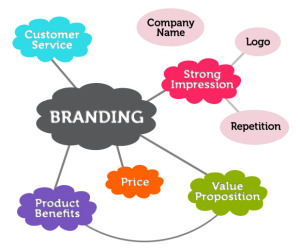Ethical Consideration within the Retail Sector – Marketing Ethics
Many companies and businessmen often face obstacles as to what practices can ethically be done in order to make money or achieve objectives (Marketing Ethics). Fraud and deception taken up by some companies is not only wrong in the moral sense but restricts the prosperity of the economy as a whole. These practices although may not be illegal in a given geographical boundary yet it cannot be undertaken with a clear conscience.
From a customer’s view point the retailing is the first tie in the distribution chain. Hence it is essential for retailers to be ethical in business practices as they affect the lives of many people. Ethical decisions have a strong significance when it comes to ensuring order and justice in a society. However, difficulty persists as to what falls under the folds of order and justice. In the retail industry, the one department often criticized for unethical actions in business is the marketing department. This negativity can be attributed to the fact that marketing tends to represent the most noticeable department to the public at large. For instance, fabricated pricing, misleading advertisements and deceiving sales pitches from sales personnel often result in hurt or angry customers as well as the media.
Moral constraints persist in the dynamics of marketing functions. For instance, contemporary marketing experts often debate that deceitful marketing is bound to be unsuccessful as the market will shove those who disrupt the common morality. Ethics depicts a form of social control, which is especially critical to the individual customers, the salespeople and the organisation itself. Marketing ethics gives birth to a more socially responsible and culturally penetrating business community. The adherence to marketing ethics has the prospective of being favorable to the society as a whole in the short as well as the long run term; therefore it should be a substantial part of any business model.
There is a pressing concern towards ethical issues, such as poor working conditions, child labor, associations with third world countries, green issues, grey imports and environmental concerns which have led to a change in attitude of the western world to consider a more socially responsible approach. The societal marketing concept stresses the need for organizations to achieve a balance between satisfying customers, achieving profits and maintain the well-being of the society; when making marketing decisions. An organization can play a role in creating a positive impact on the society if it produces useful products in an environmental friendly manner.

Over the years, organizations have evolved and realized their social responsibilities. Organizational social commitment consists of four kinds of responsibilities: legal, economic, philanthropic and ethical. These four classifications have been in existence for decades; however, in recent years social and ethical dimensions have attained increasing importance. Firms come into being to provide goods and services with an aim to maximize profits. In their efforts to attain maximum profits they often forget their responsibilities towards the society. Consumers these days place pressing importance on the need to protect the environment and hence this has put pressure on companies to realize their responsibilities and act in the favor of the society as well satisfying the customers and looking after the well-being of the society in which they operate.
Ethical Considerations
Green issues
Every business has a two-way relationship with the society. While the business contributes to the society in the form of products and services, the society provides an environment for the businesses to flourish and grown in. Since, the survival of a business depends upon the society, businesses need to perform in a manner that does not harm the environment but is useful to it. For example, companies need to be conscious of the environment they operate in and thoughtful about issues such as ozone layer depletion and global warming. Until recently, cfc (chlorofloro-carbon) which leads to the damaging of the ozone layer was used in the manufacturing of refrigerator compressors in most countries. However, today many companies have adopted various alternatives to cfc and banned its use from production processes. Companies should also take notice of fair practices when it comes to employment such as providing equal employment opportunities to everyone and a safe and fit work environment along with fair compensation packages.
Sourcing of products
Companies operating with global supply chains came under immense pressure by the consumer groups, trade union and the government in the 1990’s to ensure healthy working conditions for those producing their goods in the less developed countries. Various media campaigns have been carried out which shed light on the poor working environment in factories in the less developing countries emphasizing the need for marketing ethics and trading.
This has resulted in the growing importance of marketing ethics in the corporate responsibility agenda of major corporations. Many companies today have established social and environmental criteria for the selection of their business ventures; which includes securing appropriate standards for the labor conditions and work environment in their supply chain. Also, corporate codes of practice are being implemented so as to their ventures according to a range of social and environmental criteria, including an organisation’s efforts to secure adequate labor conditions in their supply chain, and retailers are increasingly implementing corporate codes of practice so as to certify that the working conditions of the labor involved in the production of their goods meet or exceed international labor standards.
For example, Primark’s rating fell in the consumer polls drastically in 2008 after it was discovered that a few of Primark’ suppliers were using child labor. On the other hand, Marks & Spencer had a high rating in consumer polls due to their –‘plan A’ initiative, which comprised of performing life-cycle assessment on their clothing and included carrying out life-cycle assessments on their clothing and developing a clothes recycling arrangement with Oxfam. Primark changing its suppliers and creating a website for the promotion of marketing ethics and its ethical trading records as a comeback for the child labor allegations highlights the significance of showing customers that you are sourcing responsibly.
Product Safety
Every day, a variety of new goods are produced and sold in different geographical boundaries and on virtual markets i.e. online. Increased trading and more refined designs can make it challenging to determine the products consumer purchases are safe for them or not. Product safety is an ethical obligation for every company in the retail business as they have a responsibility to provide consumers with products of value that they pay for and that are safe for use.
An example can be taken of the Yamaha group; it ensures that products and services are not harmful in any way to the consumer’s well-being. If an issue of the sort arises it is immediately dealt with and steps are taken to compensate and prevent the recurrence. In the contemporary retail industry online trading has reached its apex. However, new online products could often be unsafe and cause serious injuries or death if they fail to meet safety standards. Consumers cannot assess the products safety, toughness and inspect labels as the goods are not physically available when purchasing online. Second-hand products available online could also be unsafe as they may fail to meet the desired standards, have damaged or missing parts vital for safe operation, may not be sold with a manual for safe use and assembly instructions or may have been modified by the prior owner causing it to be unsafe.
Grey Imports
Products that are sold through non-authorized channels are known as “grey or parallel imports’. These grey imports may appear to be cheap on surface, yet they may be far from cheap when it comes to compliance issues being addressed. They raise financial as well as safety concerns for the purchasers. As these products are not imported with the consent of the manufacturer they do not fall under the manufacturer’s warranty.
Also since these non-authorized products may not pass through regular safety checks that authorized products do they could have potential harmful impact on oneself and one’s family. Moreover, no after sales support is provided as dealer and brokers are not allowed to provide service and spare parts to grey imports which mean maintenance cannot be done by specialized professionals. Grey or parallel imports often have little or no value when reselling as compared to authorized products.
Corporate Social Responsibility (CSR)
The concept of corporate social responsibility is very often linked with the concept of business ethics. Therefore, the main aim of many retailers’ ethics is focused upon the role ethical responsibility plays in order to contribute to the sustainable economic development; healthy work environment for employees, safe society for individuals, the local community and society at large to improve their quality of life. Marketing and marketers play an imperative part in the growth of corporate strategy and respond to the corporate social responsibility agenda.
Business organizations make use of scarce resources in order to produce goods and services to satisfy the customers. To carry out these activities companies need to be cost effective, innovative productive in operations. In order to become successful companies should portray sensitivity to the expectations of the customers when it comes to social issues and environmental well-being (Kotler, 2003). In order to be operating in a socially responsible manner organizations should be concerned for the people and the environment in which the business activity takes place. It is expected that firms that are socially responsible will outperform those less responsible financially in the long run. This can be as a result of customer loyalty and trust, better employee morale or public policies in favor of ethical conduct and overall marketing ethics.
According to an article by Lichtenstein and et al., theory and recent evidence indicated by researchers suggests that a corporation that is socially responsible can have a relatively positive effect on customer attitudes towards the particular corporation (Lichtenstein and et al, 2004). International companies take initiative by donating millions of dollars to non-profit organizations in the form of philanthropy, cause related marketing, employee voluntarism and various novel marketing programs. An example can be of Avon, cosmetic company which raised $200 million for education regarding breast cancer and early diagnosis services through breast cancer awareness crusade.
Consumer’s Perception
Consumers are in need of ways to attain information about the products and services they purchase without having the expertise to judge. The fact that consumers are not well-informed anymore and neither are they self-sufficient; both have a significant impact on the the importance of business ethics when dealing with consumers. Firstly, there was a time when customers could analyze and judge on their own whether the quality of a product or service was up to mark. However, now products and services are created by experts with specialized skills. This results in difficulty to judge the quality by a layman, hence companies need to be honest with the consumers and tell them if the product is of acceptable quality standards and performs the functions they need it for. Secondly, people were self-sufficient previously and could produce what they needed to in order to survive on their own. This situation has changed as people have become progressively dependent on goods that have been created by experts, machinery and high quality resources. As a result the customer has little choice but to accept the product as an honest one and trust the organization’s intentions. Hence, this makes it essential for the companies to look out for what falls under the best interest of their customers.
Other Socially Responsible Clothing Retailers
Marks and Spencer is a British retailer which specializes in clothing items and luxury food products. In 2007, this retailing giant announced a five-year plan which made serious vows and commitments to becoming “a carbon neutral, zero-waste-to-landfill, ethical-trading, sustainable-sourcing, health-promoting business.” ASOS is the second largest online retailer in the world, and its brand under the name of green room acts as a podium devoted to collections with an ethical or eco-conscious story to tell. Offering a range of organic recycled and fair trade clothing, accessories, footwear and beauty, ASOS green room makes it easy to shop more responsibly without the sharp price tag. As of 2012, H&M has raised over $4.5 million USD, through a 5 year partner program with UN charity organization UNICEF. Starting in February 2013, H&M will offer patrons a voucher in exchange for used garments. Donated garments will be processed by I:CO, a retailer that recycles used clothing with the goal of creating a zero-waste economy. The initiative is similar to a clothes-collection voucher program launched in April 2012 by Marks & Spencer in partnership with Oxfam.
Marketing Ethics Conclusion
Companies have a moral obligation towards their consumers or potential customers. They must not be deceitful and sell products that are safe for the users. However, it is not entirely clear as to what is morally preferable and where does the advertising cross the overly deceptive boundary and the extent of harm that manipulative advertising can do to people. Hence, it is better to be on the safe side and take extra precautions where the well-being of human life is concerned.
The responsibilities of a business are further illustrated in the steps that should be taken by manufacturers in order to ensure that goods of acceptable safety standards are provided to customers. Firstly business should give priority to safety. If costs are being raised in order to meet safety requirements that does not mean they should dismiss it. Products that may lead to serious injuries are often are often the ones that need the highest safety standards.
Secondly, businesses should take responsibility of any accidents caused by the product rather than blame it on product misuse. Consumers should be made aware about the proper usage of products that have a tendency to be harmful. Some consumers can still be harmed if they use products appropriately. Also, if products are continuously being misused there should be ways to make the misusing of it less harmful to the user.
Thirdly, business must monitor and check the manufacturing process on its own. Often products produced are defected as a result of mismanagement in the manufacturing process. Companies must keep a check on its activities and have a quality control team to ensure that safe and non-defected products pass through to the consumers. Sometimes external quality assessment teams or companies can be hired for an unbiased testing process.
Fourthly, when a product is prepared to be marketed, companies should have a product safety staff in-line to assess the market strategy and advertising for potential safety problem. How a product is being used in an advertisement can have a significant impact in encouraging people to use the product that way. Hence, advertisers should refrain from portraying the usage of product in a harmful manner such as showing people driving cars while texting at the same time.
Fifthly, when a product lands in the marketplace, firms should make sure that written information about the products performance is readily available to the consumers. In order to ensure the product is used in the proper manner and not misused information should be explained in detail about its proper use and made public. Warning labels are found on many products as a result of this. Lastly, companies should investigate and respond to consumer complaints. Consumers being the users can provide a good source of product safety testing and complaints can help the company determine where it lacks and what safety standards the product may lack.
In conclusion, it can be determined that the contemporary retail industry has evolved over the past decade. Previously little importance was given to matters of environmental well-being; the main objective being to maximize profits no matter what the impact it had on one’s surroundings. However, the situation is more subtle now with the consumer becoming more conscious of the environment and sensitive towards its sustainability. Retail businesses have realized the need to be socially responsible in order to gain the consumers trust, loyalty and to satisfy the market. It may incur a cost yet the outcome is far reaching for the overall growth and sustainability of not only the business but the society as a whole.
References
Gundlach, G.T. and Murphy, P.E. (1993), “Ethical and legal foundations of relational marketing ethics exchanges”, Journal of Marketing, Vol. 57 No. 4, pp. 35-46.
Kotler, P. 2003. A Framework for Marketing Ethics Management. (11th Ed). Pearson Custom Publishing.
Lichtenstein, Donald R., Minette E. Drumwright, and Bridgette M. Braig. 2004. “The Effect of Corporate Social Responsibility on Customer Donations to Corporate-Supported Nonprofits.”Journal of Marketing 68 (October): 16-33.
Murphy, P.E., Laczniak, G.R., Bowie, N.E. and Klein, T.A. (2005), Marketing Ethics, Pearson Prentice Hall, Upper Saddle River, NJ.
Nantel, J. and Weeks, W.A. (1996), “Marketing Ethics is there more to it than the utilitarian approach?” European Journal of Marketing, Vol. 30 No. 5, pp. 9-19.
Urban, G.L. (2005a), “Customer advocacy: a new era in marketing?”, Journal of Public Policy and Marketing, Vol. 24, Spring, pp. 155-9.



